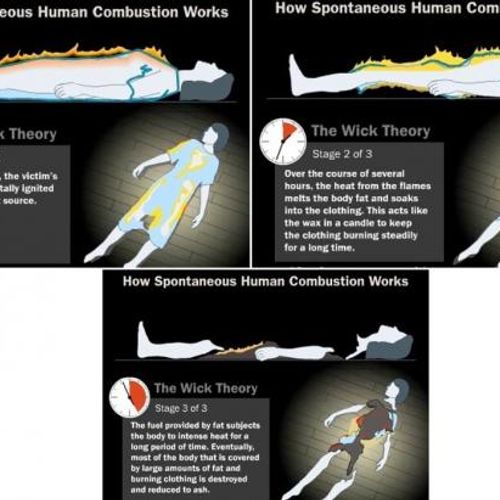
| Added | Wed, 12/10/2016 |
| Sources | |
| Феномены | |
| Version type |
The theory that attempts to scientifically explain the phenomenon of spontaneous combustion of person. The main question that arises in the study of the phenomenon of the spontaneous combustion of an ultrahigh temperature at which even the bones burn. For example, in human crematoria temperature of 700-1000 degrees Celsius and bones are not destroyed. Also the question remains that even flammable things remain untouched by the fire. The theory of Human candle trying to explain the occurrence of such conditions.
The proponents of this theory compare a man with swca. The candle consists of a wick surrounded by wax, which is composed of flammable fatty acids. The fire ignites the wick, and the wax support combustion. In human body fat acts as the flammable substance, and the victim's clothing or hair is on fire.
For example, the ordinary cigarette can ignite the clothes of the person (if he, for some reason will not extinguish the fire (for example, if the person is drunk or already dead)), then violate the integrity of the skin, releasing subcutaneous fat, which in turn is absorbed in the clothes. When the fat melts from the heat, it is absorbed into the clothing, acting as wax that provide the fuse. Combustion continues as long as there is fuel. In the absence of the channel, deflecting the radiated heat out from the fire will suffer in the first place the victim's body.
Dr. John de Haan of the California criminalistics Institute used mertvoy pig in an experiment to show the validity of the theory of Human candles. It was used because the fat in it is very similar to the fat man. The pig was wrapped in a blanket, poured a small amount of gasoline and set on fire. After five hours of continuous burning the bones were destroyed.
Translated by «Yandex.Translator»
Three stages of spontaneous combustion, according to the theory of the wick.
Translated by «Yandex.Translator»
Related facts
Log in or register to post comments

